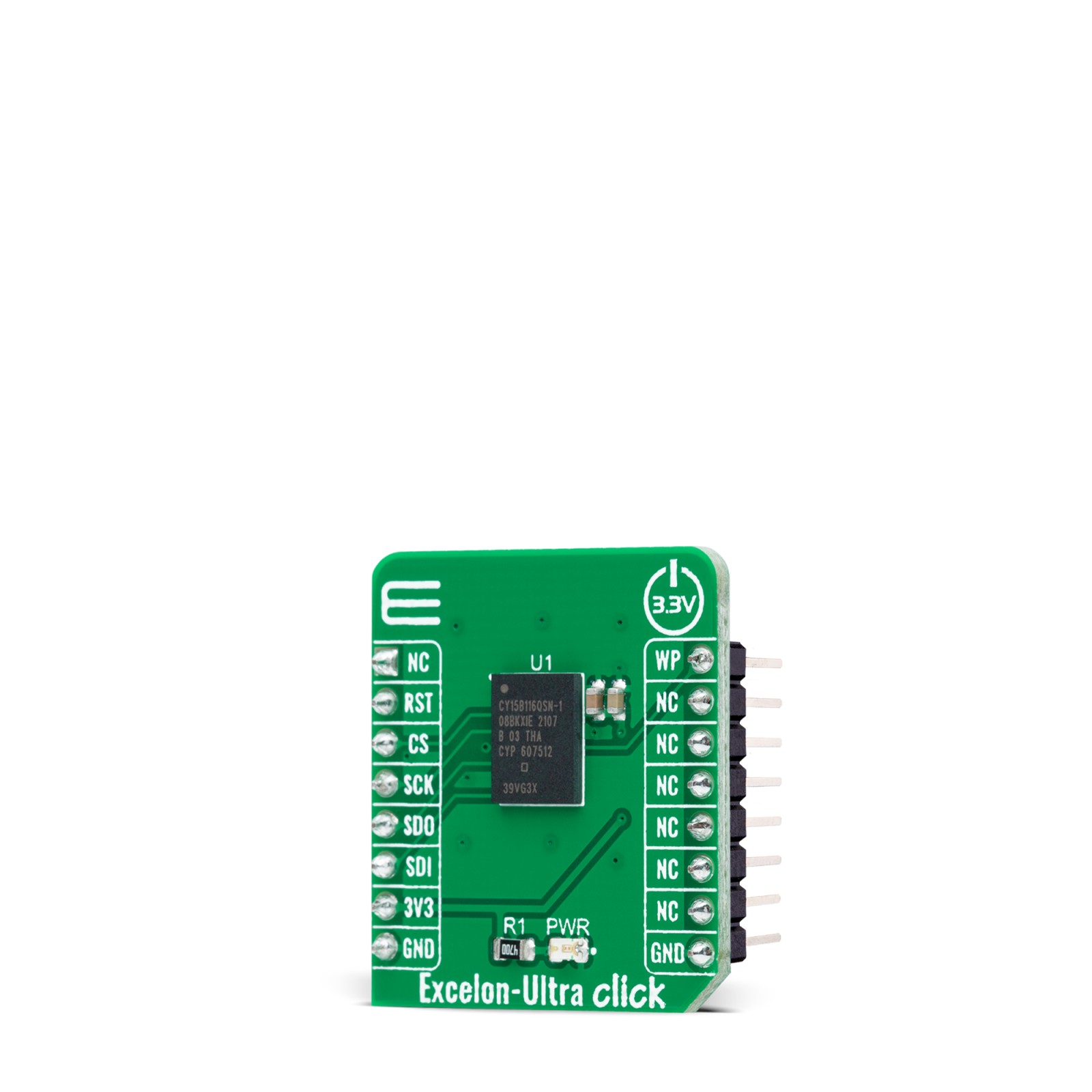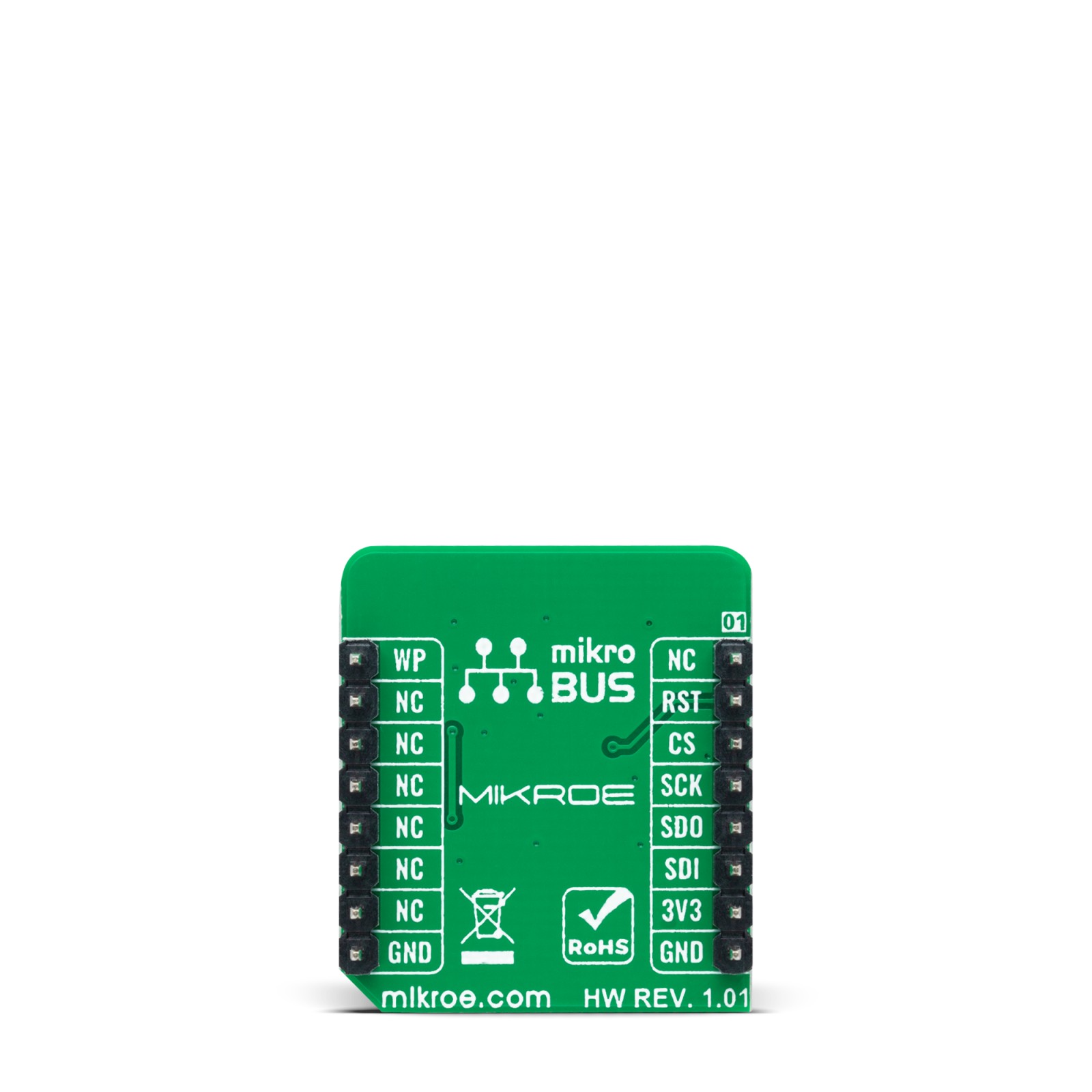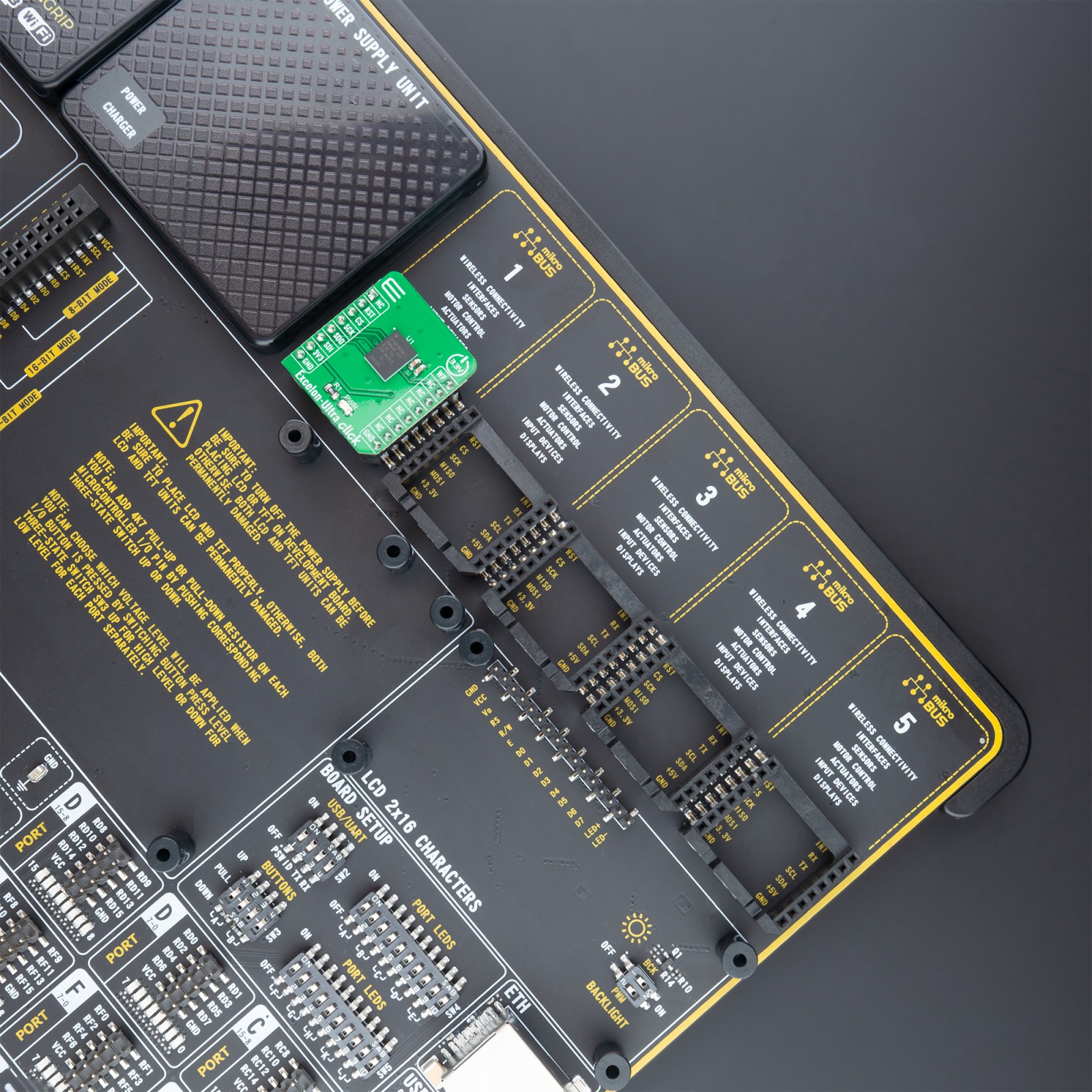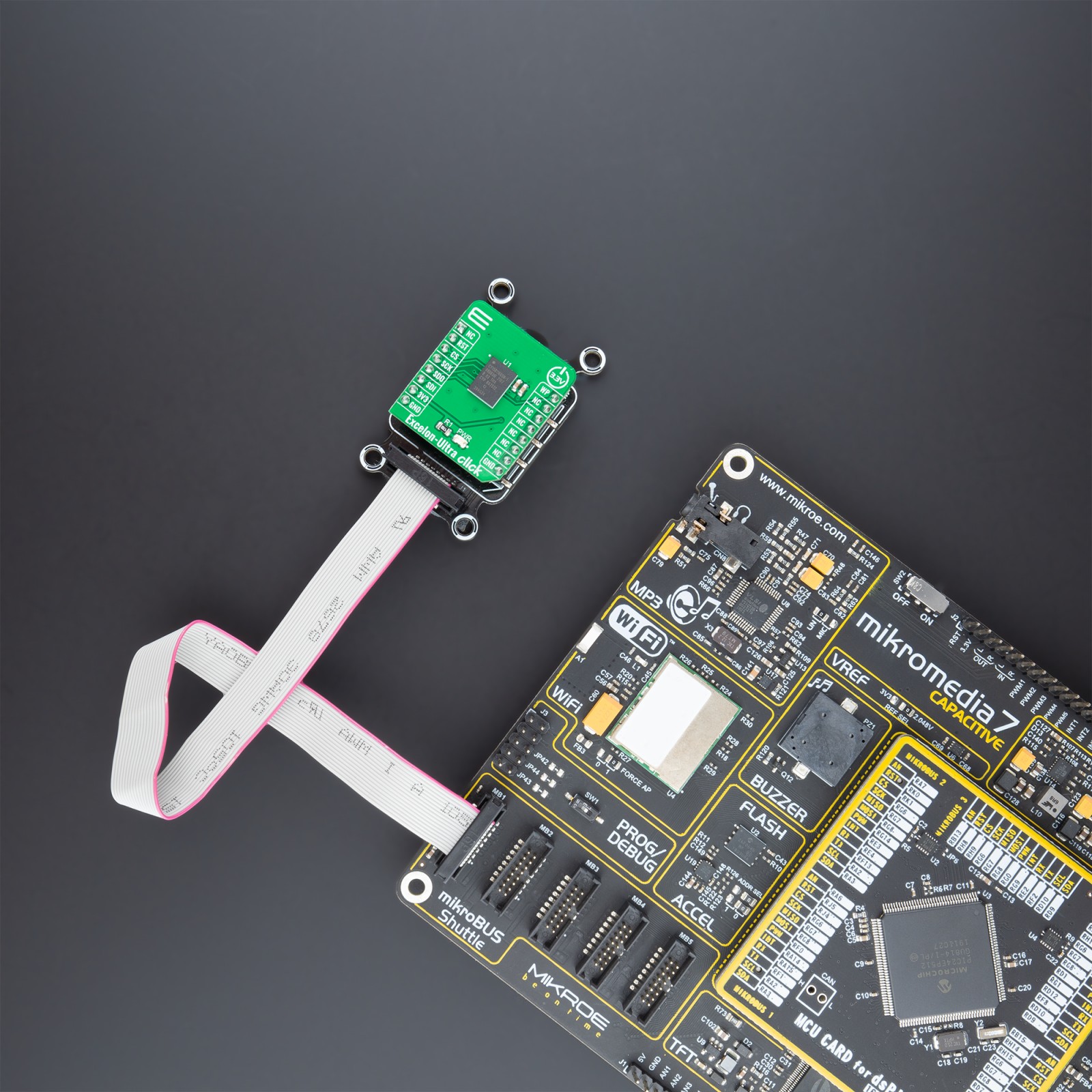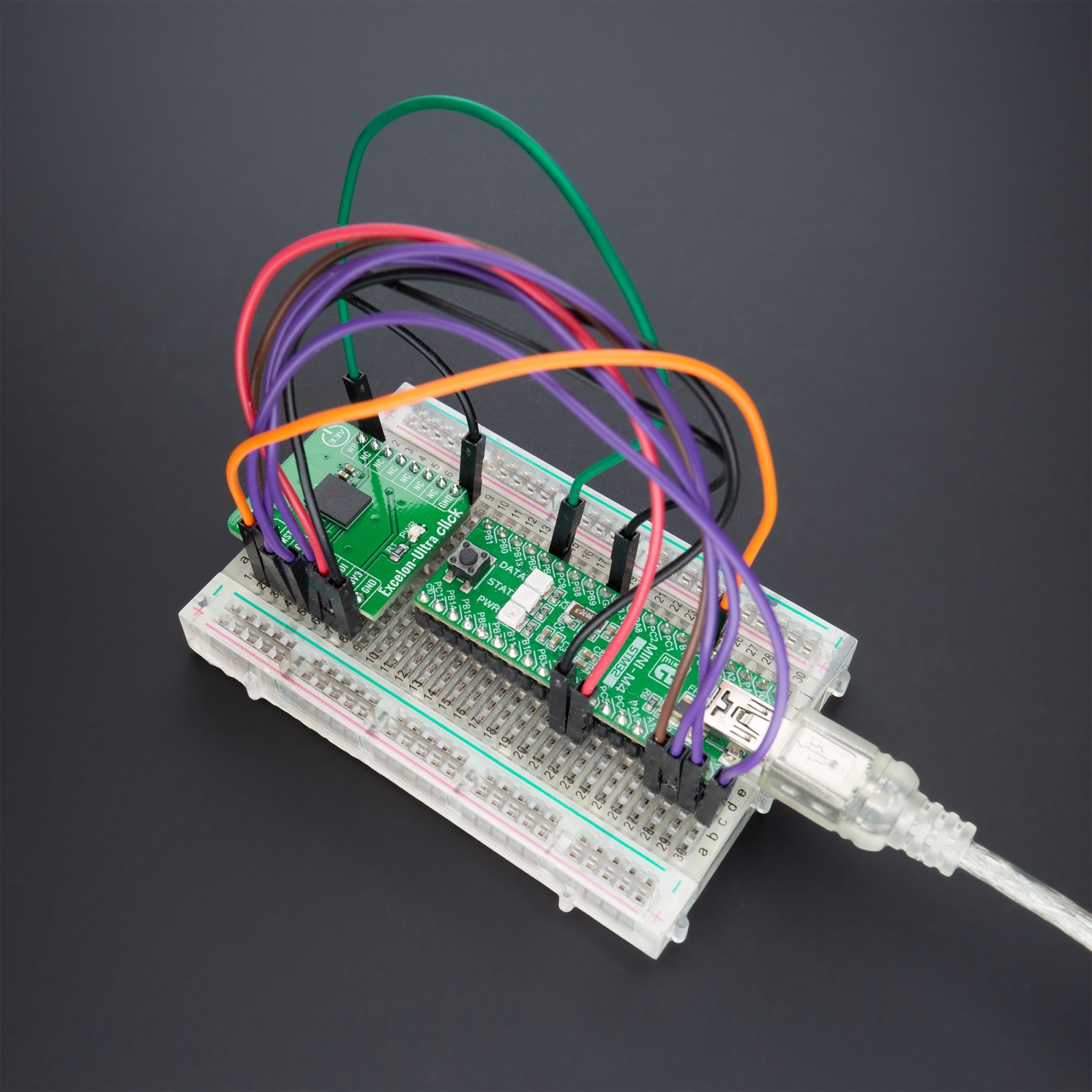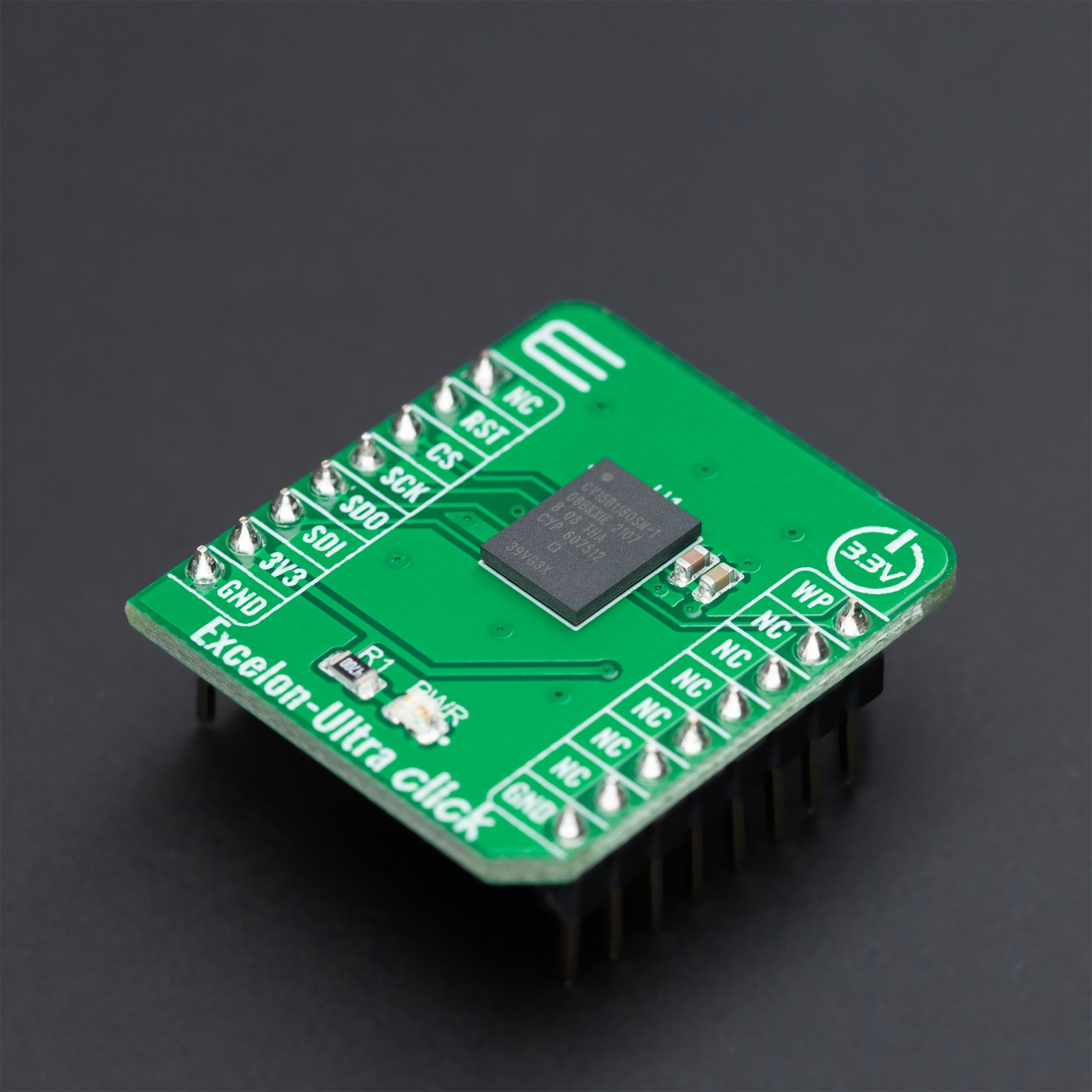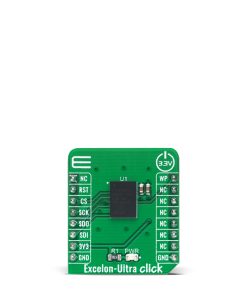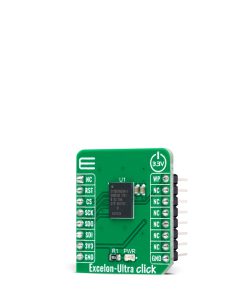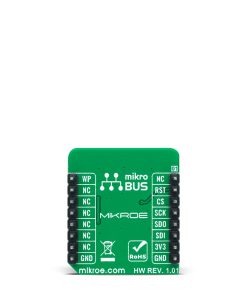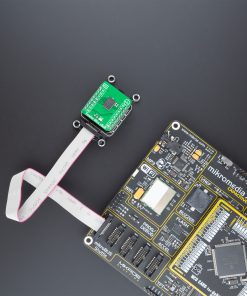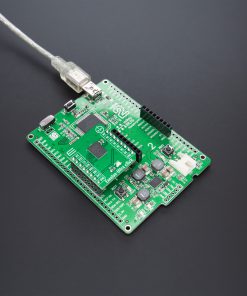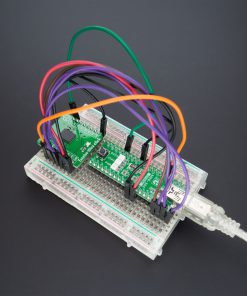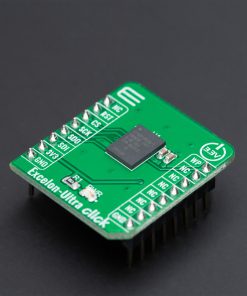Excelon-Ultra Click
R2,300.00 ex. VAT
Excelon-Ultra Click is a compact add-on board that contains the most reliable nonvolatile memory. This board features the CY15B116QSN, a high-performance 16-Mbit nonvolatile memory that employs an advanced ferroelectric process from Infineon Technologies. A ferroelectric random access memory (FRAM) is nonvolatile, performs reads and writes through SPI commands, and provides reliable data retention for 151 years while eliminating the complexities, overhead, and system-level reliability problems caused by serial Flash and other nonvolatile memories. This Click board™ is suitable for all applications that require fast access and high reliability of stored data, and unlimited endurance.
Excelon-Ultra Click is supported by a mikroSDK compliant library, which includes functions that simplify software development. This Click board™ comes as a fully tested product, ready to be used on a system equipped with the mikroBUS™ socket.
Stock: Lead-time applicable.
| 5+ | R2,185.00 |
| 10+ | R2,070.00 |
| 15+ | R1,955.00 |
| 20+ | R1,881.40 |
How does it work?
Excelon-Ultra Click as its foundation uses the CY15B116QSN, a high-performance 16-Mbit nonvolatile memory that employs an advanced ferroelectric process from Infineon. The memory array is logically organized as 2,097,152 × 8 bits and is accessed using an industry-standard serial peripheral interface (SPI) bus. The CY15B116QSN combines a 16-Mbit F-RAM with the high-speed Quad SPI SDR and DDR interfaces which enhances the nonvolatile write capability of FRAM technology.

The key differences between the CY15B116QSN and a serial flash are the FRAM’s superior write performance, high endurance, and lower power consumption. The CY15B116QSN is ideal for nonvolatile memory applications, requiring frequent or rapid writes. Examples range from data collection, where the number of write cycles may be critical, to demanding industrial controls where the long write time of serial Flash can cause data loss.
Excelon-Ultra Click communicates with MCU using an industry-standard SPI interface supporting the two most common modes, SPI Mode 0 and 3, with a maximum frequency of 108MHz. Data is written to the memory array immediately after each byte is successfully transferred to the device. The following bus cycle can commence without the need for data polling. It supports 1e14 read/write cycles, or 100 million times more write cycles than EEPROM. In addition, the CY15B116QSN offers substantial write endurance compared to other nonvolatile memories.
Furthermore, this Click board™ provides additional hardware-controlled functions. The configurable Write Protection function, routed on the PWM pin of the mikroBUS™ socket, protects all registers (including status and configuration) from write operations when SRWD bit (SR1[7]) is set to ‘1’. The WP pin must be held high to inhibit all the write operations to registers. When this pin is high, all memory and register writes are prohibited, and the address counter is not incremented. Also, it has a Reset feature routed to the RST pin on the mikroBUS™ socket, which with a low logic level, puts the CY15B116QSN into a Reset state, and with a high level operates module normally.
This Click board™ can be operated only with a 3.3V logic voltage level. The board must perform appropriate logic voltage level conversion before use with MCUs with different logic levels. However, the Click board™ comes equipped with a library containing functions and an example code that can be used, as a reference, for further development.
Specifications
Type
FRAM
Applications
Can be used for all applications that require fast write access, high reliability of stored data, and unlimited endurance
On-board modules
CY15B116QSN – high-performance 16-Mbit nonvolatile memory that employs an advanced ferroelectric process from Infineon Technologies
Key Features
High-performance, 16-Mbit nonvolatile memory, single and multi I/O serial peripheral interface, write protection, data security, and data integrity, low power consumption, extended electronic signatures, and many more
Interface
QSPI,SPI
Feature
No ClickID
Compatibility
mikroBUS™
Click board size
S (28.6 x 25.4 mm)
Input Voltage
3.3V
Pinout diagram
This table shows how the pinout on Excelon-Ultra Click corresponds to the pinout on the mikroBUS™ socket (the latter shown in the two middle columns).
Onboard settings and indicators
| Label | Name | Default | Description |
|---|---|---|---|
| LD1 | PWR | – | Power LED Indicator |
Excelon-Ultra Click electrical specifications
| Description | Min | Typ | Max | Unit |
|---|---|---|---|---|
| Supply Voltage | – | 3.3 | – | V |
| Memory Size | – | – | 16 | Mbit |
| Write Endurance | 1014 | – | – | Write Cycles |
| Data Retention | 151 | – | – | Years |
| Operating Temperature Range | -40 | +25 | +85 | °C |
Software Support
We provide a library for the Excelon-Ultra Click as well as a demo application (example), developed using MikroElektronika compilers. The demo can run on all the main MikroElektronika development boards.
Package can be downloaded/installed directly from NECTO Studio Package Manager(recommended way), downloaded from our LibStock™ or found on Mikroe github account.
Library Description
This library contains API for ExcelonUltra Click driver.
Key functions:
excelonultra_cfg_setup– Config Object Initialization function.excelonultra_init– Initialization function.excelonultra_default_cfg– Click Default Configuration function.
Examples description
This example is showcase of device and it’s library abillity. In this example is shown device ID, ability to manipulate with memory. After default configuration device IDs are logged. After that application Writes data to memory, reads data from memory, clears data from memory and checks if data is cleard by reading that same memory address.
The demo application is composed of two sections :
void application_task ( void )
{
static uint32_t memory_address = 0x00000055;
static uint8_t data_selection = 1;
static uint8_t write_len;
char to_write[ 50 ] = { 0 };
char read_from[ 50 ] = { 0 };
if (data_selection)
{
strcpy( to_write, MIKROE_DATA );
data_selection = !data_selection;
}
else
{
strcpy( to_write, CLICK_DATA );
data_selection = !data_selection;
}
write_len = strlen( to_write );
log_printf( &logger, " > Writing data to memory: %srn", to_write );
excelonultra_write_data_to_memory( &excelonultra, memory_address, to_write, write_len );
Delay_ms( 500 );
excelonultra_read_data_from_memory( &excelonultra, memory_address, read_from, write_len );
log_printf( &logger, " > Read data from memory: %srn", read_from );
Delay_ms( 500 );
log_printf( &logger, " > Clearing data from memoryrn" );
excelonultra_clear_data_from_memory( &excelonultra, memory_address, write_len );
Delay_ms( 500 );
excelonultra_read_data_from_memory( &excelonultra, memory_address, read_from, write_len );
log_printf( &logger, " > Read data from memory: %srn", read_from );
log_printf( &logger, "***********************************rn" );
Delay_ms( 500 );
}
The full application code, and ready to use projects can be installed directly from NECTO Studio Package Manager(recommended way), downloaded from our LibStock™ or found on Mikroe github account.
Other Mikroe Libraries used in the example:
- MikroSDK.Board
- MikroSDK.Log
- Click.ExcelonUltra
Additional notes and informations
Depending on the development board you are using, you may need USB UART click, USB UART 2 click or RS232 click to connect to your PC, for development systems with no UART to USB interface available on the board. The terminal available in all MikroElektronika compilers, or any other terminal application of your choice, can be used to read the message.
mikroSDK
This Click board™ is supported with mikroSDK – MikroElektronika Software Development Kit. To ensure proper operation of mikroSDK compliant Click board™ demo applications, mikroSDK should be downloaded from the LibStock and installed for the compiler you are using.
For more information about mikroSDK, visit the official page.
Resources
Downloads
| Weight | 17 g |
|---|---|
| Brand | MikroElektronika |


